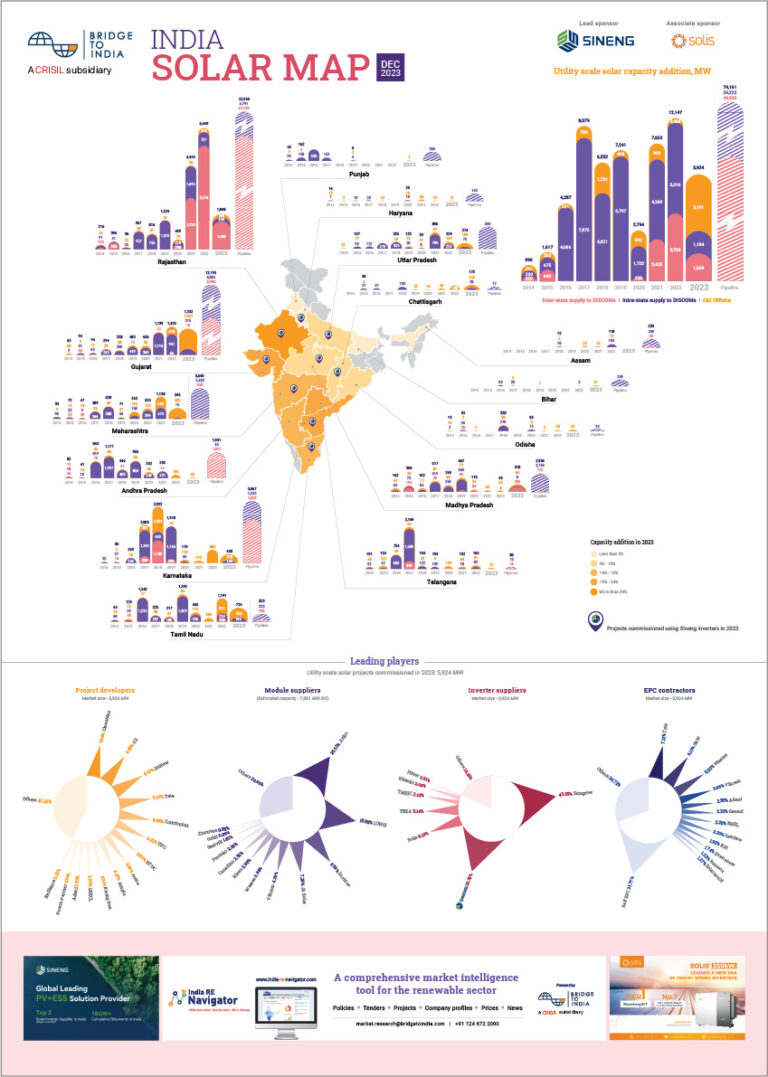Coronavirus damage impossible to assess
India has been in a near complete lockdown since 22 March 2020. The current three week lockdown is due to last until 14 April 2020. All commercial and social activity including all international and domestic travel has been completely banned. Only essential services including healthcare, food and critical infrastructure – telecom, power, security and banking – are exempted.
On the face of it, India has been relatively untouched so far. Total number of infected patients and fatalities was reported to be 1,024 and 24 respectively as on 28 March, minuscule in comparison to rest of the world but the fear is that these numbers are hugely underreported. Because of severe lack of testing facilities, very few people are being tested. Actual numbers could be far greater, possibly explaining the government’s overly cautionary stance.
A number of relief measures have been announced to mitigate economic fallout of the virus. For the renewable sector, there are three relevant provisions.
Force Majeure relief for delay in construction
MNRE has issued a guidance to the various government authorities that project developers should be given more time for achieving COD under Force Majeure provisions in the contracts. This is mere guidance – actual relief would be granted on a case-by-case basis depending on duty to mitigate, actual project level impact and other specific provisions in individual PPAs. We expect the legal process of obtaining time relief to still be a contentious affair as the project developers would try to maximise time extension for a host of reasons – the Solar Power Developers Association is seeking a six-month blanket relief – but the authorities are likely to take a stricter stance.
Continuity of project operations
MNRE has separately notified that all operational renewable projects should be allowed to operate without any operational or logistical hindrance.
Moratorium on servicing bank debt
India’s central bank, the Reserve Bank of India, has loosened monetary policy and allowed a three month moratorium on debt repayments plus relaxation in working capital lending norms.
We believe that the direct sector fallout in most cases would still be detrimental but contained. There would be no compensation for additional operating, interest and working capital costs. But any commissioning shortfall would simply move to latter part of the year and overall utility scale project activity levels are expected to catch up within about 3-6 months (assuming no extended lockdown or other disruption).
However, we fear that the indirect impact would potentially last much longer and be far more damaging. Average power demand in India has shrunk by a staggering 36 GW, or about 25% of total demand, because of the lockdown. While high tariff demand from commercial and industrial consumers has collapsed, low tariff residential demand has gone up. If this demand shift prevails for a weighted average period of two months, financial hit for the DISCOMs is estimated at about INR 400 billion (USD 5.3 billion), more than double their annual losses.
Figure: Daily power demand in India

Source: POSOCO
In addition, because of reported delays in payments by end consumers, the government has allowed the DISCOMs to defer payments to power producers by up to three months. As a result, working capital position of IPPs, already struggling with payment delays, is expected to deteriorate even further. Reduction in power demand has also depressed power prices on the exchanges to about INR 2.20/ kWh and raised the risk of curtailment.
Rooftop solar and open access projects with C&I offtake are expected to face even more difficult construction and offtake risk related scenarios.
Bad news does not stop here unfortunately. INR has depreciated against USD by about 5% in the last month increasing capital costs. International freight charges have shot up. Shipments, stuck at ports, are incurring demurrage charges. There is mass exodus of labourers to their native places. Fearing disease and employment uncertainty, some workers may choose to not come back to their regular jobs at all. It is too early to estimate net impact on the sector or hazard a guess on when we would see a return to normal. The timing, coming towards the end of the financial year, couldn’t be worse.
We pray for good health and safety of all our readers.












